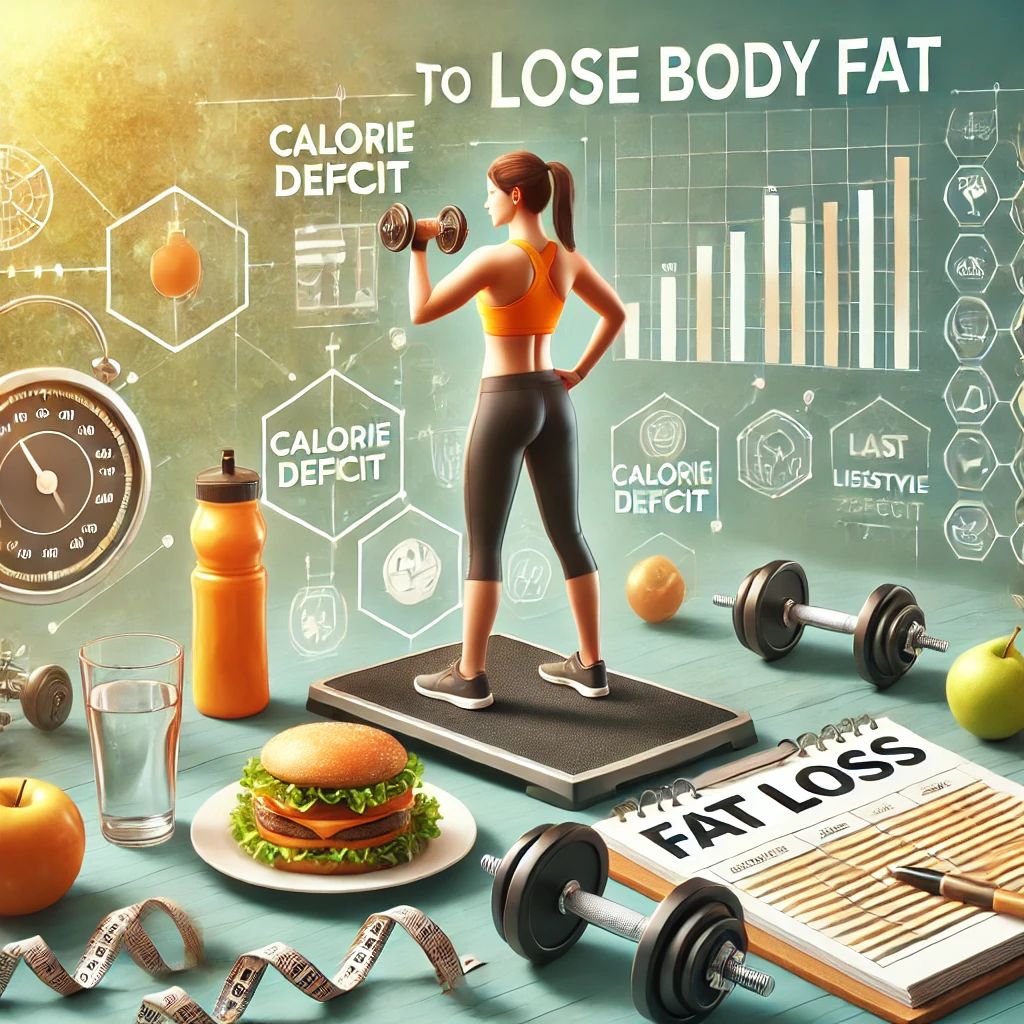
Understanding Body Fat Loss
Losing body fat is not just about looking leaner; it’s also essential for improving overall health and reducing the risk of conditions such as heart disease, diabetes, and high blood pressure. To achieve sustainable fat loss, a combination of diet, exercise, and lifestyle changes is necessary. By focusing on creating a calorie deficit and building healthy habits, you can effectively lose body fat and maintain your progress.
Key Strategies to Lose Body Fat
Here are practical and science-backed strategies to help you shed excess body fat and achieve your fitness goals:
1. Create a Calorie Deficit
The most effective way to lose body fat is to consume fewer calories than your body needs to maintain its current weight:
2. Follow a High-Protein Diet
Protein plays a crucial role in fat loss by helping to preserve muscle mass, reduce appetite, and increase the number of calories burned during digestion:
3. Incorporate Strength Training
Strength training helps build muscle, which can increase metabolism and make it easier to lose fat:
4. Try High-Intensity Interval Training (HIIT)
HIIT involves alternating between short bursts of intense exercise and periods of rest or lower intensity:
5. Focus on Whole, Nutrient-Dense Foods
Eating whole foods that are rich in nutrients can help support fat loss by providing your body with essential vitamins and minerals:
6. Stay Hydrated
Drinking enough water is essential for optimal fat loss and overall health:
7. Get Enough Sleep
Sleep is crucial for weight management and fat loss, as it helps regulate hormones that control hunger and metabolism:
8. Manage Stress
Chronic stress can lead to elevated cortisol levels, which can increase appetite and fat storage:
9. Avoid Liquid Calories
Calories from beverages like sugary drinks, alcohol, and even some smoothies can add up quickly:
10. Monitor Your Progress
Tracking your progress can help you stay motivated and make necessary adjustments to your routine:
Conclusion: A Sustainable Approach to Losing Body Fat
Losing body fat requires a combination of healthy eating, regular exercise, and lifestyle changes. By creating a calorie deficit, incorporating strength training, and adopting habits that support overall well-being, you can achieve sustainable fat loss. Remember, the goal is not just to lose weight quickly but to build long-term habits that promote a healthy and balanced lifestyle.


